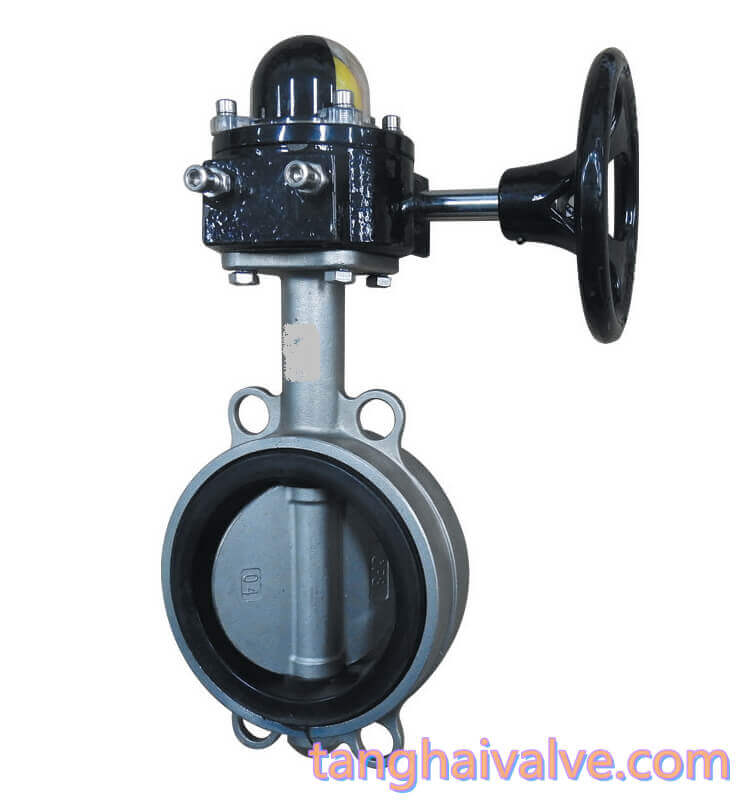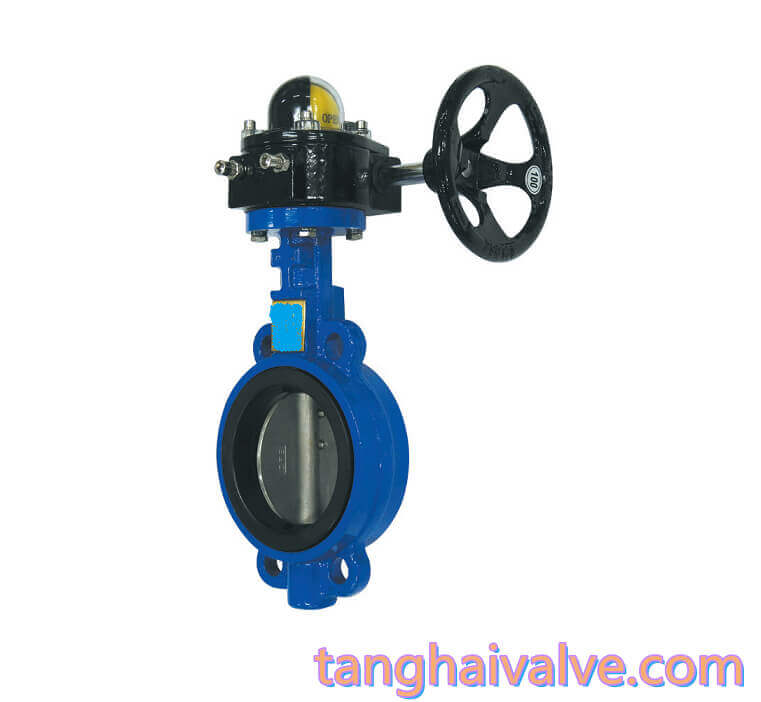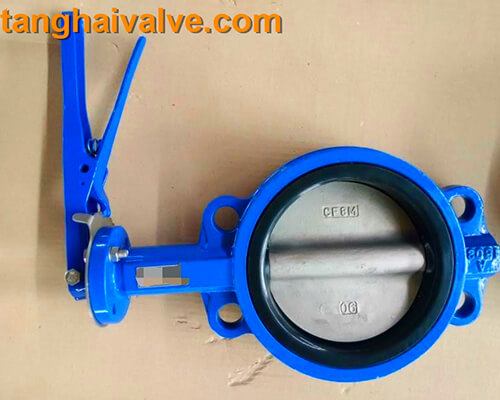Driving device for Manual Wafer Butterfly Valve
The driving device of the manual wafer butterfly valve is mainly the handwheel and the handle. For valves with little torque required for opening and closing, a manual device, handwheel or handle can be used to directly fix the valve stem or valve stem nut. The diameter of the handwheel is based on the relevant standards or the torque required for valve opening and closing. According to the standard, the opening and closing force added to the handwheel or handle cannot exceed 360N, and its shape and size can be in accordance with the provisions of JB/T93-2008. Steel plate, aluminum alloy or plastic pressed handwheels can also be used on manual wafer butterfly valves with smaller nominal size DN. The butterfly valve also has a remote-operated manual device using a universal joint.

JIS 10K-wafer butterfly valve-backup seat (3)
Manual Wafer Butterfly Valve Handle and Turbine Drive
The handle of the manual wafer butterfly valve is mainly used with the gear, while the handwheel needs to be used with the worm drive. When the operating force of the valve exceeds 360N, cylindrical spur gears, bevel gears and worm drive devices are often used to reduce the force required for opening and closing. What’s the difference between a handle and a turbo? The first is that the driving method is different. The turbine butterfly valve mainly drives the rotation of the internal gear through the rotation of the handwheel, so that the valve plate rotates and the valve plate is opened and closed. The handle butterfly valve mainly uses the rotation of the handle to turn the valve plate to open and close. Secondly, the force required to operate the handle is large, so the diameter of the valve used is generally below 250mm. Therefore, the handle of the manual wafer butterfly valve and the turbine drive are also different in nominal diameter.
Operating procedures for the drive device of the manual wafer butterfly valve
1. The operator should be familiar with the structure and working principle of the manual butterfly valve.
2. The opening force of the manual butterfly valve exceeds 15kg. If you feel particularly strenuous, you should eliminate the product failure.
3. When the manual butterfly valve is closed, the handle should be reversed for one or two turns, which is conducive to the reopening of the manual butterfly valve.
4. There will be a sediment accumulation area near the manual butterfly valve that is closed for a long time, and these sediments will form resistance to the opening and closing of the manual butterfly valve.
5. When opening, the opening and closing actions should be repeated to promote the loosening of the sediment.
6. If it is found that there is often sediment deposition near the manual butterfly valve, the manual butterfly valve should be opened and closed frequently to facilitate the removal of sediment.
7. For the manual butterfly valve that does not open and close for a long time, it should also be operated once or twice regularly to prevent rust or silt.
8. Check the shaft end for leakage every six months. If there is leakage, replace the packing in time.
TH Valve is a professional manufacturer of butterfly valve, gate valve, check valve, globe valve, knife gate valve, ball valve with API, JIS, DIN standard, used in Oil, Gas, Marine industry, Water supply and drainage, fire fighting, shipbuilding, water treatment and other systems, with Nominal Diameter of DN50 to DN1200, NBR/EPDM/VITON, Certificates & Approvals: DNV-GL, Lloyds, DNV, BV, API, ABS, CCS. Standards: EN 593, API609, API6D
Related news /knowledge:
Where can butterfly valves be used
Uses and characteristics of manual butterfly valve (1)
The correct operation method of manual valve
What are the advantages of gate valves-resilient & metal seated





 © Copyright 2020 Tianjin Tanghaidongyang Valve Co., Ltd. All Rights Reserved.
© Copyright 2020 Tianjin Tanghaidongyang Valve Co., Ltd. All Rights Reserved.